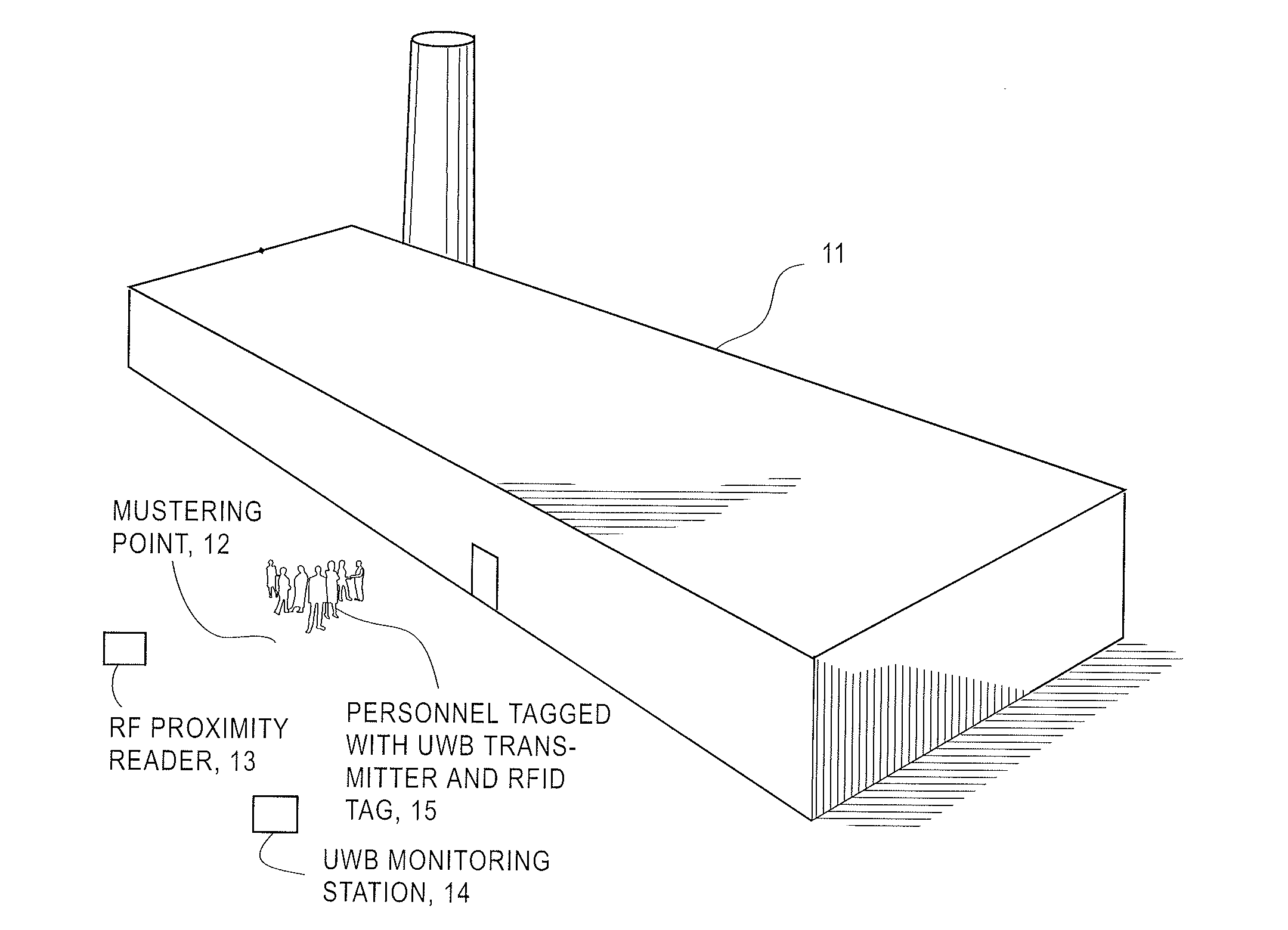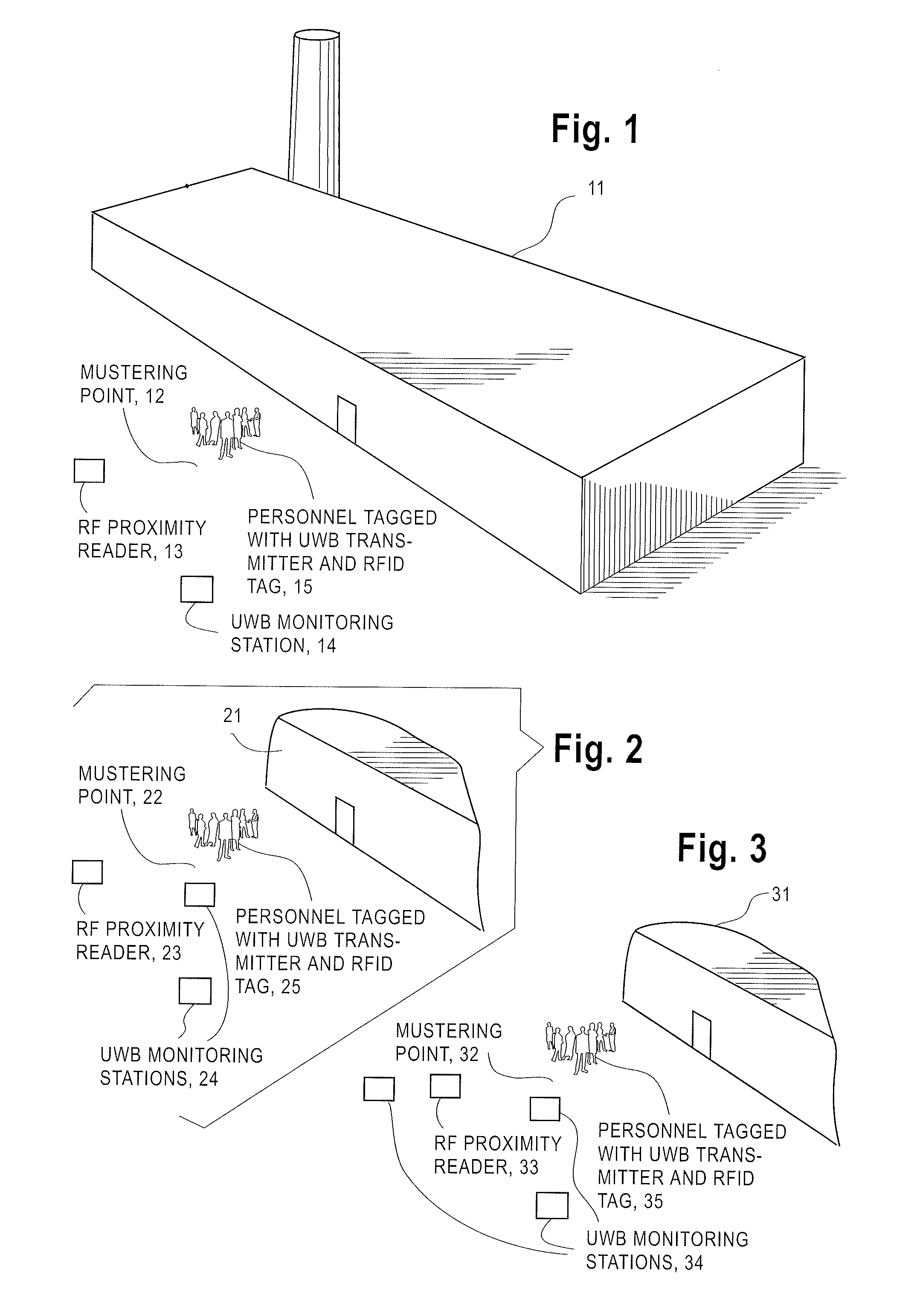Method for accounting for people in emergencies in industrial settings
a technology for industrial settings and emergency accounting, applied in the field of systems and methods for accounting for individuals in emergency situations in industrial settings, can solve the problems of increasing the hazard of the environment, affecting the safety of individuals in or near the environment, and wasting a great deal of effort and resources, and achieve the effect of accurate identification of the tag
- Summary
- Abstract
- Description
- Claims
- Application Information
AI Technical Summary
Benefits of technology
Problems solved by technology
Method used
Image
Examples
Embodiment Construction
)
[0037]This invention provides a method for accounting for individuals during emergencies in industrial settings. The method utilizes a system for area-wide tracking of people and objects in industrial settings. As used herein, “industrial setting” means an area such as a manufacturing facility, plant, refinery, drilling platform or similar area having areas where there is an increased incidence of signal reflection and attenuation primarily due to high concentration of metal in the architecture and equipment of such areas. Industrial settings have not been able to employ area-wide location systems and obtain reliable location information in areas densely populated with metal equipment or structures. By “area-wide” location system, we mean a system which can be used to accurately determine the position of people or objects in a specified large area, typically hundreds or thousands of square meters, as opposed to a “proximity-based” system in which a tag must be brought into proximit...
PUM
 Login to View More
Login to View More Abstract
Description
Claims
Application Information
 Login to View More
Login to View More - R&D Engineer
- R&D Manager
- IP Professional
- Industry Leading Data Capabilities
- Powerful AI technology
- Patent DNA Extraction
Browse by: Latest US Patents, China's latest patents, Technical Efficacy Thesaurus, Application Domain, Technology Topic, Popular Technical Reports.
© 2024 PatSnap. All rights reserved.Legal|Privacy policy|Modern Slavery Act Transparency Statement|Sitemap|About US| Contact US: help@patsnap.com









